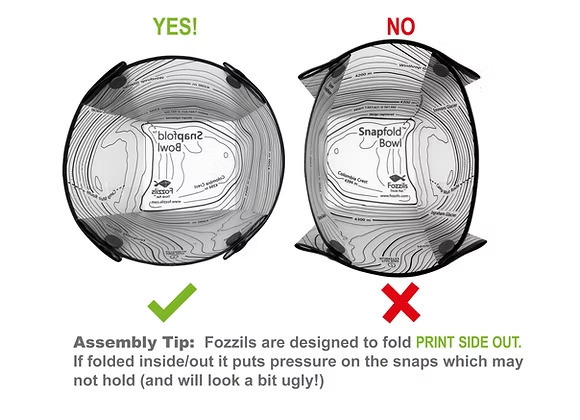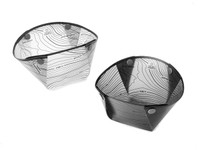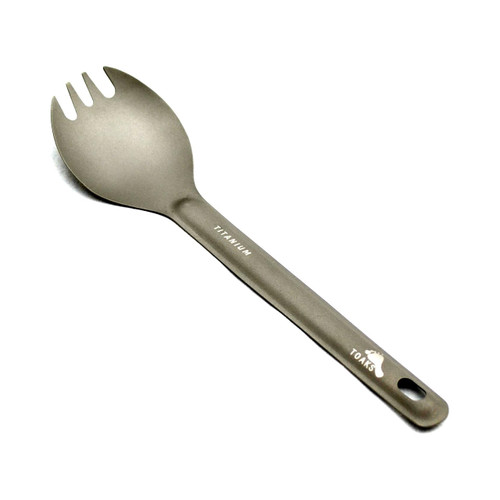- Fold & snap together, stores flat
- Deep-dish design
- Non-stick, easy clean surface
- Handy measuring lines
- Unfold for a cutting mat
- 2 Pack – Mist + Grey
Snapfold™ Bowls are lightweight origami-style bowls that pack flat. They quickly fold and snap together to form a deep-dish bowl ready for both food and drink. Handy measuring lines (oz/ml) can help with food prep. When finished, the non-stick surfaces are easy to clean. As a bonus, unfold for a convenient clean work surface and cutting mat, just avoid cutting across the fold lines.
Snapfold Bowlz are sold in a 2 pack – one Mist + one Grey. Think flat.
Specifications
Package: 1x Mist bowl + 1x Grey bowl
Volume: 20.4 fl oz (600 ml), approx. each
Material: Food-grade polypropylene, BPA free, plastic snaps
Temperature: Heat resistant to 230° F (110° C), boiling water OK
Dimensions (LxWxH)
Assembled: 5.5 x 6 x 3.4 in. (14 x 15.4 x 8.8 cm)
Flat: 9 x 10 in. (22.9 x 25.5 cm)
Weight: 1.42 oz (40.3 g) each
Care: Hand wash only, no dishwasher, no microwave
FAQ
How durable are Snapfold?
Snapfold are made from a specially formulated high quality, food grade, polypropylene. The material has unique properties making it highly suitable for folding and re-folding without breakage. Of course, the material can be damaged by cutting, or exposing it to an open flame, but under normal use it is flexible and virtually unbreakable.
Cold Weather Tip - Due to its low moisture content, the material performs particularly well in cold temperatures in comparison to other plastics. Snapfold will, however, stiffen in the cold which adds pressure on the snaps. This may make a snap difficult to close. In cold weather, give the folds a good squeeze/pinch, particularly near the base, during assembly. This will reduce pressure on the snaps and will not harm the items.
How do I fold Snapfold?
Before assembling for the first time, pre-fold the creases several times in both directions. This will soften the plastic hinges making the products easier to fold. Snapfold will develop a "memory" over time, making subsequent assembly even easier.
To fold correctly, please follow the image below.

Can Snapfold be used with hot liquids?
The material is heat resistant to 230° F (110° C). Water boils at 212° F (100° C), so Snapfold may be used with hot drinks such as coffee, tea, cocoa, soups, etc. You may notice some softening of the material when used with hot food or liquids.
How do I clean Snapfold?
Snapfold have non-stick surfaces and unfold for easy cleaning. However, they are designed for hand washing only. Please do not put in a dishwasher, as this may damage the items. To clean, simply use mild soap and cold water, and gently scrub with a soft cloth or sponge. Rinse thoroughly and allow to air dry.
Are Snapfold safe for food?
Yes! All Snapfold use high quality food-grade polypropylene which is BPA free.
Will Snapfold leak?
Snapfold are designed so that liquids will not reach the snap holes when filling or when used normally. They may leak, however, if held in such a way as to allow liquids to reach the snap holes. Please take care to follow the cautionary instructions on the product packaging, particularly if using with hot liquids which could cause injury.
Can Snapfold be used in a microwave? Dishwasher?
No, Snapfold cannot be used in the microwave or dishwasher. We recommend hand washing to maintain their quality.
Are Snapfold safe for children?
These products are not toys and should only be used by children under adult supervision - particularly when used with hot foods or liquids that could cause injury.
Are Snapfold environmentally friendly?
Yes! Snapfold are reusable and a terrific alternative to single-use and disposable plates, cups, and bowls. Moreover, Snapfold are made from polypropylene, which is considered by many environmental groups to be the safest and most environmentally friendly plastic (after bioplastics, which are not as durable) due to the relatively lower energy consumption and lack of harmful byproducts in production and easily available, low-cost recycling options.













